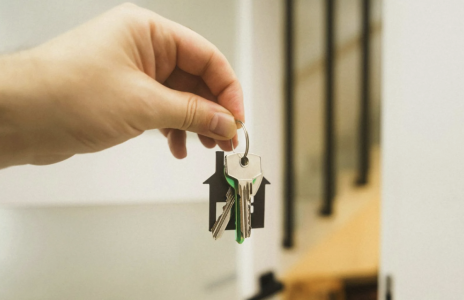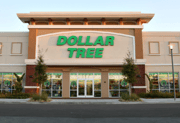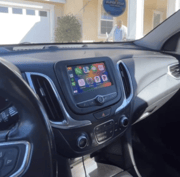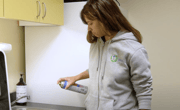This US city is selling homes for $1—but here’s what it really takes to buy one
By
Veronica E.
- Replies 0
Buying a house for just one dollar might sound like a dream—or a scam.
But it’s actually happening right now, with homes being offered for less than the price of a cup of coffee.
While the deal has caught national attention, it comes with more than a few strings attached.
Buyers must commit to full-scale renovations and meet strict requirements that go far beyond paying a dollar.
So is it a hidden gem for hopeful homeowners—or a risky money pit?

The initiative is led by Louisville’s Landbank Authority in Kentucky, which focuses on restoring vacant properties and stabilizing neighborhoods impacted by blight and disinvestment.
To qualify for the program, a home must have been officially vacant and abandoned for at least a year, often with open code violations, city clean-up orders, or boarded windows.
These are not move-in ready homes—they’re serious fixer-uppers.
The city is offering these properties for $1 to attract buyers who are willing to renovate and occupy the homes themselves, not flip them for profit.
The goal: encourage long-term community investment and reduce neighborhood decay.
A dollar may buy the deed, but it won’t cover the real cost.
The city’s application process ensures only serious and well-prepared buyers are accepted. Here’s what’s required:
While the home itself costs just $1, the total renovation bill can range from $104,000 to over $216,000, depending on the scope of work.
That’s a significant investment, but potentially a rewarding one for the right buyer.
Vacant homes can drag down property values, attract crime, and erode residents’ well-being.
A 2017 Urban Institute study found that communities with abandoned properties often experience higher crime rates, increased mental health issues, and more physical health concerns.
By offering these homes for a symbolic price, the city hopes to:
According to Tia Bowman, executive administrator for the Office of Community Housing and Development, the goal is to revitalize—not gentrify.
“It’s not about the dollar cost,” she said. “It’s about what you’re putting into this property.”
Despite good intentions, some local leaders are voicing concerns.
Councilwoman Tammy Hawkins questioned whether average residents can realistically afford to participate in the program.
“If they can barely fix up their own home, the average person wouldn’t have that amount of money,” she told the Courier Journal.
Critics also worry that targeting the West End of Louisville, a historically Black area, could trigger unwanted gentrification—raising property values and taxes in a way that displaces longtime residents.
City officials say they’re working to prevent this by giving priority to owner-occupiers, not investors.
Opportunities like these can also attract scammers.
The Bellamy Law Firm recommends the following precautions:
Some locals see promise.
Monica Hill, who toured one of the properties, believes the initiative could bring much-needed hope to struggling blocks: “When you start fixing up other properties that are distressed, it’s going to add value to the community.”
Scott, a contractor who grew up in the area, echoed that optimism. “A lot of these old properties here, they just need love,” he told WDRB.
If you have renovation skills, financial flexibility, and a desire to help restore a neighborhood, this might be a once-in-a-lifetime opportunity.
But be realistic—the biggest cost is in the rehab work, not the purchase price.
This program isn’t for house flippers or quick-turn profits—it’s for people who want to put down roots and help rebuild from within.
Read next:

Would you consider buying a $1 home if your city offered one? Do you think this type of program can help restore struggling neighborhoods—or is it too risky for most buyers?
At The GrayVine, we want to hear your thoughts, especially if you’ve taken on a renovation project of your own—or know someone who has. Your insight could help others make a smart (and safe) choice.
But it’s actually happening right now, with homes being offered for less than the price of a cup of coffee.
While the deal has caught national attention, it comes with more than a few strings attached.
Buyers must commit to full-scale renovations and meet strict requirements that go far beyond paying a dollar.
So is it a hidden gem for hopeful homeowners—or a risky money pit?

$1 home program offers abandoned properties to buyers willing to renovate and restore them. Image Source: Pexels / Jakub Zerdzicki.
What is Louisville’s $1 home program?
The initiative is led by Louisville’s Landbank Authority in Kentucky, which focuses on restoring vacant properties and stabilizing neighborhoods impacted by blight and disinvestment.
To qualify for the program, a home must have been officially vacant and abandoned for at least a year, often with open code violations, city clean-up orders, or boarded windows.
These are not move-in ready homes—they’re serious fixer-uppers.
The city is offering these properties for $1 to attract buyers who are willing to renovate and occupy the homes themselves, not flip them for profit.
The goal: encourage long-term community investment and reduce neighborhood decay.
Also read: 5 things that drain the most electricity in your home
What buyers must do to qualify
A dollar may buy the deed, but it won’t cover the real cost.
The city’s application process ensures only serious and well-prepared buyers are accepted. Here’s what’s required:
- Proof of Funds: Applicants must show access to $29,000 to $62,750, depending on the property’s condition, to cover renovation costs.
- Construction Plan: A detailed renovation timeline and itemized budget must be submitted.
- Intended Use: Preference is given to those who plan to live in the home rather than rent or resell.
- Completion Deadline: All repairs must be finished within one year of purchase.
While the home itself costs just $1, the total renovation bill can range from $104,000 to over $216,000, depending on the scope of work.
That’s a significant investment, but potentially a rewarding one for the right buyer.
Also read: 7 hidden home hazards you shouldn’t ignore
Why the city is doing this
Vacant homes can drag down property values, attract crime, and erode residents’ well-being.
A 2017 Urban Institute study found that communities with abandoned properties often experience higher crime rates, increased mental health issues, and more physical health concerns.
By offering these homes for a symbolic price, the city hopes to:
- Raise surrounding property values
- Grow the local tax base
- Improve safety and reduce blight
- Support better health outcomes for neighbors
According to Tia Bowman, executive administrator for the Office of Community Housing and Development, the goal is to revitalize—not gentrify.
“It’s not about the dollar cost,” she said. “It’s about what you’re putting into this property.”
Also read: Don’t waste your money: 7 home renovations to avoid in 2025
Community concerns about gentrification
Despite good intentions, some local leaders are voicing concerns.
Councilwoman Tammy Hawkins questioned whether average residents can realistically afford to participate in the program.
“If they can barely fix up their own home, the average person wouldn’t have that amount of money,” she told the Courier Journal.
Critics also worry that targeting the West End of Louisville, a historically Black area, could trigger unwanted gentrification—raising property values and taxes in a way that displaces longtime residents.
City officials say they’re working to prevent this by giving priority to owner-occupiers, not investors.
Also read: How retirees are turning their home equity into extra income
Watch out for scams
Opportunities like these can also attract scammers.
The Bellamy Law Firm recommends the following precautions:
- Verify ownership. Don’t hand over money until you confirm who legally owns the property.
- Check licenses. Real estate agents should be registered with your state’s licensing board.
- Be cautious of cash-buying schemes. “We buy homes” signs may signal predatory offers.
- Avoid high-pressure lending offers. Especially from unsolicited sources.
- Use licensed movers. If you do buy a home and move, get multiple quotes and verify credentials.
Also read: A look inside the “bird-nest” tiny home village offering affordable rent with strict criteria
How the community is responding
Some locals see promise.
Monica Hill, who toured one of the properties, believes the initiative could bring much-needed hope to struggling blocks: “When you start fixing up other properties that are distressed, it’s going to add value to the community.”
Scott, a contractor who grew up in the area, echoed that optimism. “A lot of these old properties here, they just need love,” he told WDRB.
Also read: 7 common DIY security setups that might leave your home vulnerable
Is a $1 home the right choice for you?
If you have renovation skills, financial flexibility, and a desire to help restore a neighborhood, this might be a once-in-a-lifetime opportunity.
But be realistic—the biggest cost is in the rehab work, not the purchase price.
This program isn’t for house flippers or quick-turn profits—it’s for people who want to put down roots and help rebuild from within.
Read next:
- What I found inside this $305K Victorian home left me speechless—would you stay the night?
- Have this attic fan at home? Major recall issued over fire hazard in 3 million units
- Tired of slow Wi-Fi? These 10 simple home tips could speed it up fast
Key Takeaways
- Louisville is offering vacant homes for $1 through its Landbank Authority to encourage community-driven revitalization of distressed neighborhoods.
- Buyers must submit proof of funds, renovation plans, and agree to live in the home, with all work completed within one year.
- While the homes cost $1, renovation costs can range from $104,000 to over $216,000, raising concerns about accessibility and gentrification.
- The city prioritizes applicants who will occupy the homes and contribute to long-term neighborhood stability, not real estate speculation.
Would you consider buying a $1 home if your city offered one? Do you think this type of program can help restore struggling neighborhoods—or is it too risky for most buyers?
At The GrayVine, we want to hear your thoughts, especially if you’ve taken on a renovation project of your own—or know someone who has. Your insight could help others make a smart (and safe) choice.






